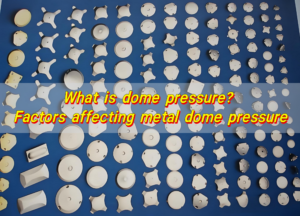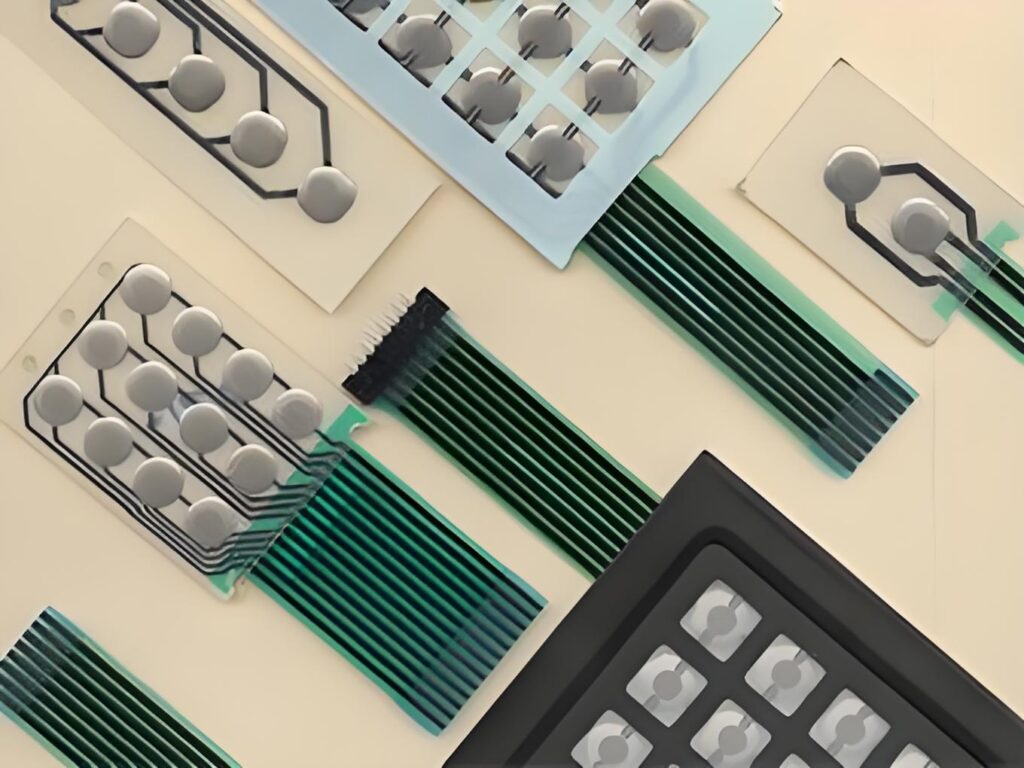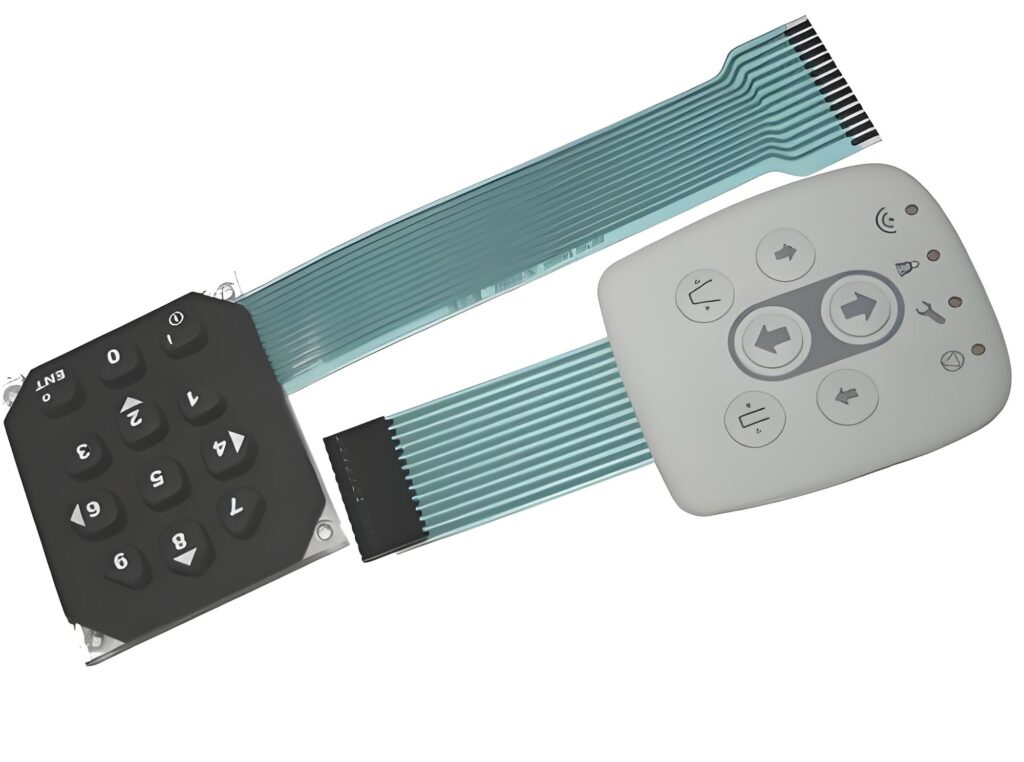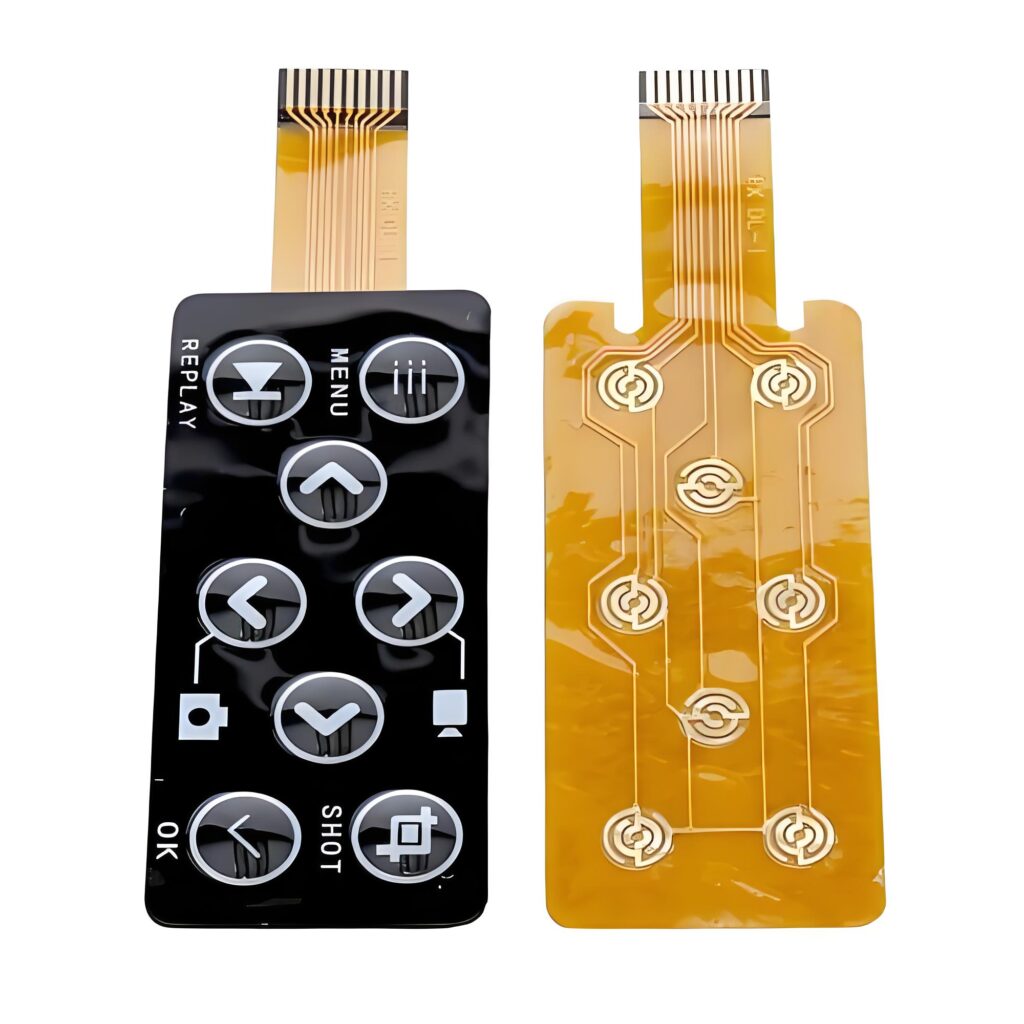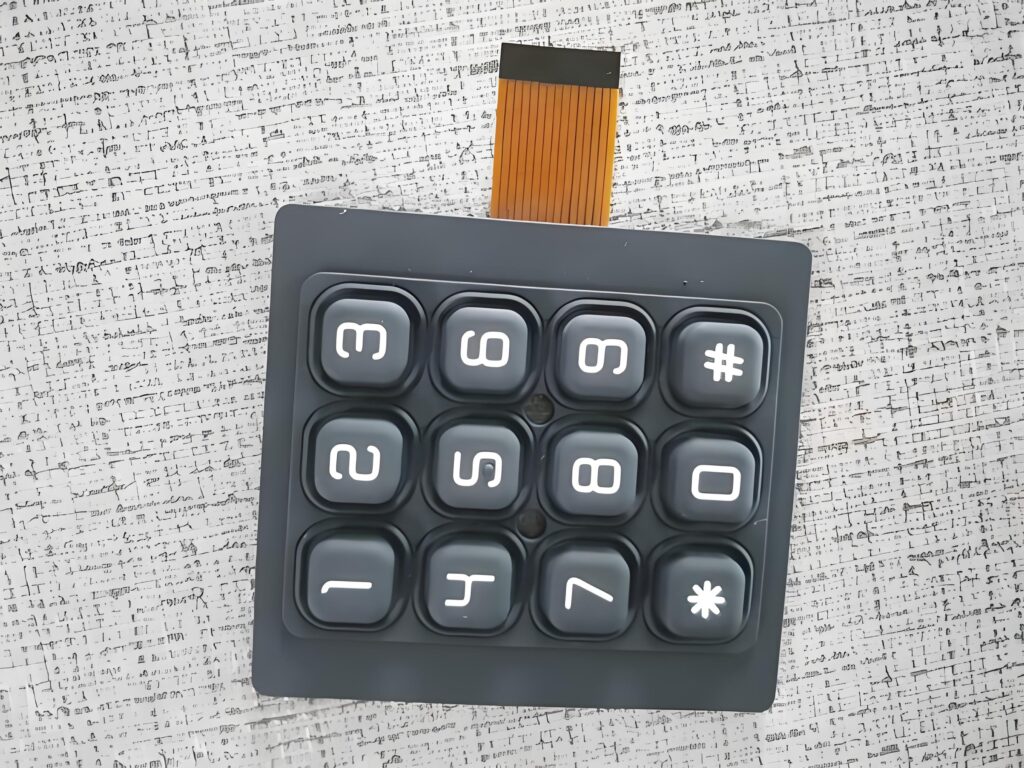Parylene is a polymer material with unique properties. It is prepared by chemical vapor deposition (CVD), in which the monomer of parylene is heated and vaporized in a vacuum environment, and then polymerized on the surface of the substrate at a low temperature to form a uniform and dense film.
What is parylene used for?
The use of parylene in membrane switches mainly includes providing protection and insulation functions.
Parylene is a polymer material obtained by vacuum deposition technology, which has excellent properties such as uniformity, conformality, no micropores and defects, and chemical inactivity.
Due to its stable chemical properties, parylene can provide good protection and insulation effects in membrane switches to prevent moisture, corrosion and other environmental factors from affecting the switch.
In addition, the thickness of parylene can be controlled within 1?m, and no catalysts and solvents are used. The produced film is pure and the outgassing volume is small. These characteristics make it perform well in membrane switches.
What is another name for parylene?
Another name for parylene is parylene. Parylene is a polymer film prepared by chemical vapor deposition. Its structure is composed of polyxylene, which gives it electrical properties, heat resistance, weather resistance and chemical stability.
What are the advantages of parylene?
The advantages of parylene in membrane switches mainly include the following aspects:
Excellent electrical insulation performance: Parylene has excellent electrical insulation performance, which can effectively isolate the current, prevent circuit short circuit, and ensure the stability and safety of the switch.
Corrosion resistance: Parylene coating has excellent corrosion resistance, can resist the erosion of corrosive substances such as moisture, acid and alkali, and extend the service life of the membrane switch.
Moisture resistance: Parylene film has excellent moisture resistance, which can effectively prevent moisture penetration, keep the inside of the switch dry, and avoid circuit failures caused by moisture.
Chemical stability: Parylene coating has strong resistance to a variety of chemical substances, can maintain stable performance in harsh environments, and ensure the long-term reliability of the switch.
Transparency and lubricity: Parylene coating has high transmittance in the visible light range and low friction coefficient, which can reduce resistance during operation and improve the sensitivity and service life of the switch.
Preparation process: Parylene is prepared by chemical vapor deposition process, which can form a uniform, pinhole-free coating on complex-shaped substrates and is suitable for membrane switches of various shapes.
What are the problems with parylene coating?
The problems with parylene coating in membrane switches mainly include the following aspects:
Corrosion problem: Parylene coating may suffer from electrolytic corrosion in membrane switches. This is mainly due to the influence of water or other moisture on the electrical contacts within the component, or the applied voltage causing the development of unintended electrolytic cells, decomposing compounds to trigger corrosion reactions.
Effect of temperature changes: Rapid changes in temperature may cause the outer layer of the coating to crack or break, thereby triggering a corrosion response. Due to the small size of the PCB, some corrosion mechanisms are less obvious, but pits and cracks may develop, resulting in a wider range of physical damage on the surface and inside of the assembly.
Material selection issues: The application of parylene coating in membrane switches also needs to consider the characteristics of different types of parylene. For example, Parylene N has high dielectric strength and low dielectric constant, and has the strongest penetration ability; Parylene C has excellent dielectric properties and physical and mechanical properties, and has the lowest permeability to moisture and corrosive gases; Parylene D has excellent physical and mechanical properties and high thermal stability at higher temperatures.
Preparation process issues: Parylene plastic film is prepared by chemical vapor deposition (CVD), and the entire process is carried out under vacuum pump standards. Although this method can accumulate into a uniform film in sharp corners, inside gaps and in extremely tiny pinholes, the temperature and vacuum degree need to be strictly controlled during the preparation process to ensure the uniformity and density of the coating.
In summary, the application of parylene coating in membrane switches needs to comprehensively consider its corrosion protection, temperature change effects, material selection, and preparation process to ensure its stability and reliability in practical applications.
Is parylene coating waterproof?
Parylene coating has excellent waterproof performance in membrane switches. Parylene coating is prepared by chemical vapor deposition (CVD) process, which can form a uniform and dense parylene film on the surface of membrane switch.
This coating not only has excellent water resistance, but also remains stable in various environments without releasing harmful chemical byproducts.
How durable is parylene coating?
Parylene coating has excellent durability in membrane switches, which is mainly reflected in the following aspects:
First, parylene coating has excellent corrosion resistance and density, and can provide a completely uniform coating surface without pinholes, which helps to prevent corrosion and dielectric breakdown, thereby extending the service life of membrane switches.
Second, parylene coating performs well in various environments. It can withstand thermal loads, tolerate a variety of chemicals and environmental influences, including UV radiation, and has excellent barrier properties, which can effectively curb the penetration of gases and liquids.
In addition, parylene coating performs well in coating complex contours, edges, cracks and cavities, which makes its application in membrane switches more extensive and reliable.
Finally, the preparation method of parylene coating also has an important impact on its durability. It is prepared by chemical vapor deposition and uses a vacuum pyrolysis vapor deposition process to form extremely thin films, which are suitable for electrical insulation media, protective coatings and encapsulation materials for electronic components.
What are the different types of parylene coating?
There are many types of parylene coatings, each with its own unique characteristics and application scenarios.
Parylene N: This is a major dielectric material with a very low dielectric loss factor, high dielectric strength, and a low dielectric constant that does not vary with frequency. It is suitable for electronic components that require low loss and high stability.
Parylene C: This coating has excellent electrical and physical properties and very low permeability to moisture and corrosive gases. It is suitable for environments that require high barrier properties and corrosion resistance.
Parylene D: Similar to Parylene C, but can withstand higher temperatures. Suitable for applications that require higher temperature tolerance.
Parylene HT: Suitable for applications with high temperatures (short-term temperature resistance up to 450┬░C) and long-term UV stability. It has the lowest coefficient of friction and dielectric constant, as well as the highest permeability.
ParyFree®: This is a halogen-free parylene with the advanced barrier properties of parylene C, while its mechanical and electrical properties are superior to other commercially available parylenes. Suitable for specific industries that require halogen-free materials.
These different types of parylene coatings have their own advantages in chemical stability, moisture resistance, electrical properties and thermal stability, and are suitable for different industrial and scientific research fields.
In short, parylene, as a polymer material with unique properties, plays an important role in the electronics field, especially in electronic components such as membrane switches. BEST Technology ensures the quality of membrane switches through a rigorous testing process. Comprehensive testing and inspection procedures will be implemented throughout the production stage to ensure its reliability and functionality.


